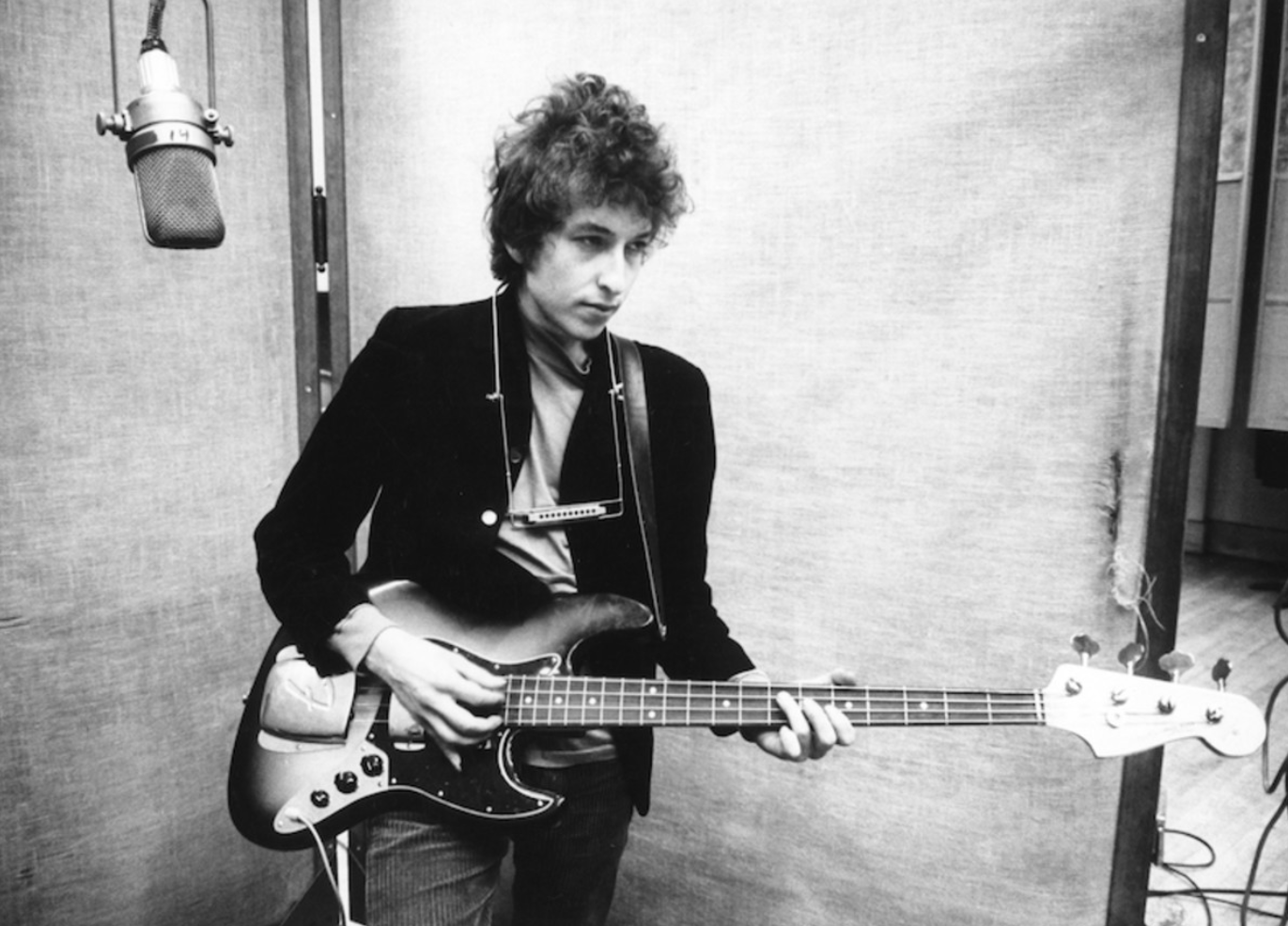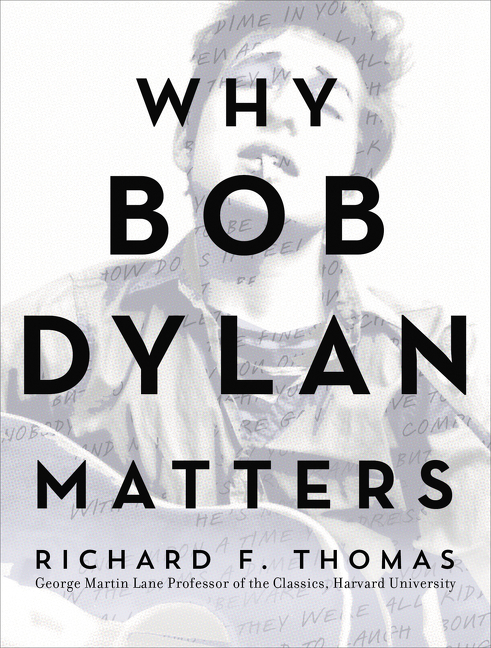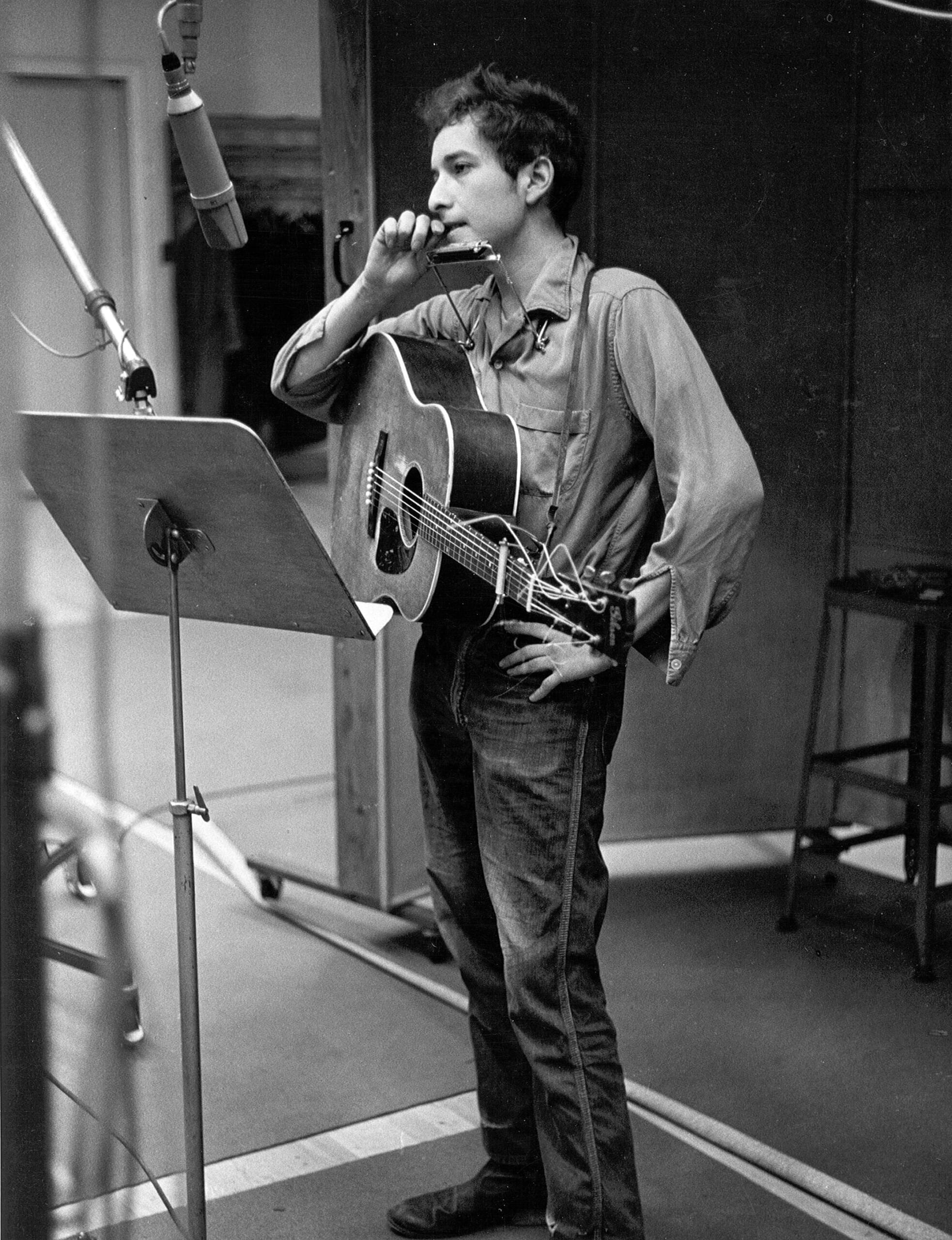These Are The 20 Best Bob Dylan Songs, Ranked
Did your favorite Dylan tune make the cut?

Few singer/songwriters have impacted American culture the way that Bob Dylan has. In Harvard professor Richard Thomas’ new book, “Why Bob Dylan Matters,” he painstakingly analyzes the Nobel Prize-winning rock legend’s expansive discography to explain what makes his lyrics as timeless the poems of literary greats like Homer or T.S. Eliot.
Check out Thomas’ list of the top 20 Bob Dylan songs below (at least according to one totally-obsessed Harvard professor.)

I’ve generally resisted doing what I’m about to do, giving a list of my top 20 Dylan songs, mostly because I can’t do it, and they’re only my top 20 in the moment. Things could change.
On April 12, 1963, a month before his 22nd birthday Bob Dylan, performing at the Town Hall in New York City told how he was asked to “write something about Woody…what does Woody Guthrie mean to you in twenty-five words” for an upcoming book on Woody Guthrie, at the time afflicted with Huntington’s Disease, to which he would succumb in 1967.
“I couldn’t do it,” Dylan went on, “I wrote out five pages, and, I have it here, have it here by accident, actually.” So for seven minutes he proceeded to recite a poem, almost 200 lines of poetry which captured the essence of Guthrie. Likewise, coming up with about 4% of the songs of Dylan that I would pick, much less rank, is pretty much impossible.
But here goes. I’ll omit the one that Rolling Stone Magazine voted all time greatest song by anyone, “Like a Rolling Stone.”
Here is my top 20 right now. Tomorrow’s list could be quite different.

20. “I Pity the Poor Immigrant”
Plaintive song of empathy, for the poor immigrant who just doesn’t fit, and whose preoccupations— that man “who falls in love with wealth itself and turns his back on me”—keep him from joining the world of the singer.
19. “Billy”
In different takes and versions, the song from Sam Peckinpah’s Pat Garrett and Billy the Kid features plaintive harmonica playing. A masterpiece of narrative development as the singer throughout addresses the outlaw with whom he empathizes, whose fate is “to be shot down by the man who was your friend.”
18. “My Back Pages”
One of many songs in which Dylan turns his back on the folk and protest movement, when he was “so much older then” as he becomes “much younger than that now,” and launches into one of a series of changes in his musical career turning away from the “finger-pointing” songs of the early 1960s.
17. “It’s Alright Ma (I’m Only Bleeding)”
One of the most intensely vivid songs Dylan ever wrote, with the singer going through an astonishing critique of capitalism, politics and religion, “thought-dreams” for which his head would be put in a guillotine if people could read them.
16. “When I Paint My Masterpiece”
Opener during the Rolling Thunder Revue (1975–76) tour by which time Dylan had indeed “painted” his new masterpiece, Blood on the Tracks. One of many Roman excursions Dylan has made over the years.
15. “Every Grain of Sand”
From Shot of Love, as Dylan was “coming down” from the gospel period, but before Infidels in 1983 would at last seem to turn away from that born-again phase, this song is pure poetry, as secular as religious, and a beautiful exploration of all the singer has experienced.
14. “Positively Fourth Street”
https://www.youtube.com/watch?v=v9F-mmdrcA4
Perhaps the greatest put-down songs Dylan ever wrote, even if we don’t know who he’s putting down: a woman, a landlord, a record-label executive? It doesn’t matter, but you don’t want to be in the shoes of the person in the final verse, of whom Dylan sings “You’d know what a drag it is to see you.”
13. “Mr. Tambourine Man”
Dylan’s great stream of consciousness song, showing signs of his exposure to Arthur Rimbaud and French symbolist poetry, with the singer outside of time, reveling in the disturbed, disrupted, world that his song transcends.
12. “Changing of the Guards”
Like “Shelter” this song also anticipates the born-again phase of Dylan that would come on the next year. A song that looks back across the sixteen years to when it all began, as well as to what was about to happen, when your hearts “must have the courage for the changing of the guards.
11. “Highlands”
https://www.youtube.com/watch?v=Tt-N_irbG90
The first five lines of this song come from Robert Burns’ 18th century poem/song, “My Heart’s in the Highlands.” The rest is from the imagination of Bob Dylan, which includes updating the situation from the 1975 classic “Tangled Up in Blue,” a song whose world the singer tries in vain to resurrect, only to be told he “picked the wrong time to come.”
10. “Workingman’s Blues #2”
Beautiful song from 2006 that seems in hindsight to have prophesied the 2008 economic collapse, two years before the event: “The buying power of the proletariat’s going down / Money’s getting shallow and weak.” This song then invokes, alters and repurposes some verses of Confederate poet Henry Timrod, and Ovid, Roman poet in exile from 2,000 years ago, blending these disparate texts and creating a story that exists throughout time. Homer replaces Ovid in performance as Bob Dylan rewrites and becomes Odysseus, the wanderer looking for a way home.
9. “Early Roman Kings”
https://www.youtube.com/watch?v=PeJbJLoWREQ
Dylan at his literary best. The title, preannounced, made people in my neck of the woods think this would be about Romulus and Tarquin the Proud, the legendary kings of Rome, but the first verse revealed the Roman kings, “in their sharkskin suits” to be a 1960s Latino gang from the Bronx.
But wait! In the second verse the ERKs are distributing the corn, just like the real early Roman kings. Then the singer morphs into Odysseus, taunting the Cyclops, from Homer’s Odyssey. Typical of the deliberate incongruities that have always been part of his artistry. And yet it is also a fantastic song in performance even if you know none of this, which is why he and his band play it night after night.
8. “Shelter from the Storm”
https://www.youtube.com/watch?v=_wYiI2_HUJ4
About a different time, “one of toil and blood,” when the woman gave him shelter from the storm, easily applied to the woman who saved him from himself. She is easy to see as Sara Dylan, the shelter the refuge the two sought in 1966 following whatever happened with his motorcycle. By 1975 things are going wrong, as he admits “I took too much for granted.” Fantastic in Rolling Thunder performance.
7. “Simple Twist of Fate”
https://www.youtube.com/watch?v=uGVrNC5Dmdk
“Here’s a simple love story. Happened to me.” So Dylan introducing it in Bob Dylan at Budokan. Like many of the songs from Blood on the Tracks, this one plays with identity in the twilight encounter in the park that leads to a one-night stand in a strange hotel, the woman gone by the time “he woke up” the next morning. Far from simple, the song has many twists and radical lyric changes in performance, including a line that takes us back to the 17-year-old Dylan: “You should have met me back in ’58.”
6. “Tryin’ to Get to Heaven”
https://www.youtube.com/watch?v=9w9fUZZfA78
In this song Dylan, like the rhapsode of ancient Greece, stitches together lines and verses from the songs in his tradition, from Woody Guthrie to Tom Rush to the anthologies of Alan Lomax, and so produces an exquisite song, the story of someone in trouble, on the run, looking for one last shot at redemption, heading down the river, “tryin’ to get to heaven before they close the door.”
5. “Shooting Star”
One of Dylan’s most beautiful and poetically structured songs, reflecting on a relationship past but, like so many in his song book, not yet dead. In two tight and complementary verses the singer sees a shooting star and thinks in the first of “you,” in the second of “me,” wondering alternately whether she made it through and whether he became what she wanted him to be.
The same couplet opens and closes each of these verses. In the bridge that follows things get religious and complex, and in the final verse, structured just like the first two, he sees the shooting star slip away, as life goes on, with a note of regret (“I guess it’s too late …”), but that’s alright, “tomorrow will be another day.”
4. “Boots of Spanish Leather”
https://www.youtube.com/watch?v=pUoXQXxxQXg
Based on the reality that Dylan’s girlfriend was off in Italy, not Spain, at the time he wrote the song, but created through the art of Dylan’s songwriting, a beautiful song—written in a duet tradition that goes way back—in which the singer tries to get his love to come back across the lonesome ocean.
3. “Long and Wasted Years”
A relationship busted up, but still active in the memory of the singer with descending guitar chords reinforcing the sense that things aren’t going well, as the singer reflects and regrets, “if I hurt your feelings I apologize.”
The end, “so much for tears, so much for those long and wasted years,” takes us back to 1964 and “Don’t Think Twice”— “you just kind of wasted my precious time.” But there is affection her that was missing from that earlier, brutal ending.
2. “Mississippi”
An utterly compelling song, one of Dylan’s very greatest. Held back from the 1997 album Time Out of Mind, which Dylan came to feel was over-arranged, the song is powerful in second spot of the new millennium’s “Love and Theft”. A song about all sorts of things, including the whole career of Dylan if we like, “I’ve been in trouble ever since I set my suitcase down.”
1. “Visions of Johanna”
Perhaps the most aesthetically compelling song, whose pictorial and cinematic images conjure relationships and desire in the highest poetic terms, particularly as heard in the acoustic first half of the 1966 tour.
“Why Bob Dylan Matters” is available on Amazon beginning November 21.
